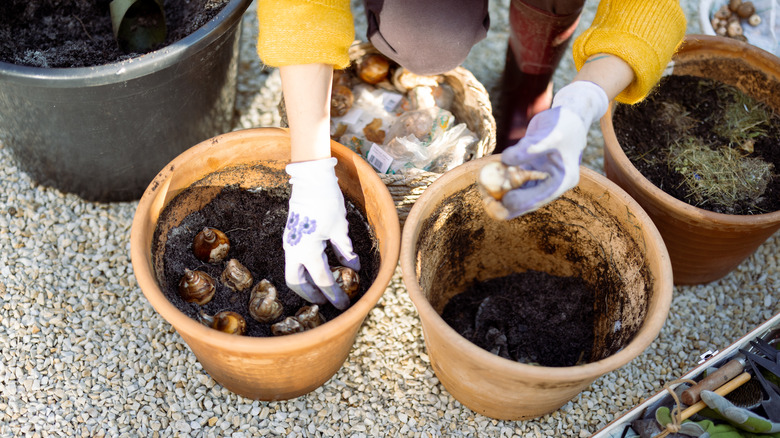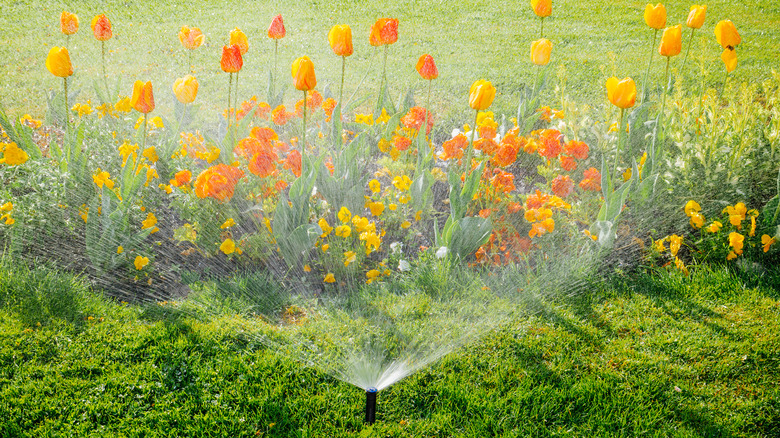Tulip bulbs lie dormant under the soil for much of the year. They bloom for just a few weeks in spring as the weather starts to warm. What’s the best method for watering plants that seem, quite honestly, barely alive most of the time? Depending on how much rain or snow your area gets, it’s best to water the bulbs well when you plant them. After that, give them water once a week at most.
Tulips are part of the lily family and are native to arid Central Asia. The bulb of the plant — the bit that sits in the soil — is adapted to store water and nutrients, helping the plant survive times of scarcity. When Dutch botanist Carolus Clusius planted the first tulips in the Netherlands in the late 16th century, he started what was known as tulip mania, a speculative craze that resulted in the plant becoming a florist shop and home garden staple centuries later. Tulip enthusiasts have developed endless varieties, and though colors and flower head shapes vary wildly, water and care needs remain similar.
When to water tulips bulbs

Whether you’re planting your tulips in the ground or in planters, do so in the fall. You want to get the bulbs safely snuggled into the soil before it freezes in the winter. Alternatively, you may have to pop your tulips in the freezer in the warmest growing zones to give them the cold snap they need to develop properly. The soil should be sandy and well-draining — tulips will rot if their roots and bulbs sit in standing water. Water them well at this stage. Then, provide little to no care unless the climate gets particularly dry.
Things are slightly different if you’re growing in a container garden, though. As you may already know, planters dry out fast. In the summer, just one day without water and the shallowest pots will need a top-up. To check if your potted tulips need watering, press your finger about one inch into the soil. If it feels dry and crumbly, add some water until it’s damp again.
Other water necessities

While it’s not necessary to soak the bulbs before planting your tulips, doing so may actually be beneficial, since a moist (but not saturated) bulb is more likely to grow strong roots. In addition, soaking can prevent bulb and root rot. Commercially, the bulbs of tulips are soaked in special preparations like foliar sprays if the grower needs to reduce the stem length.
Due to their desert origins, flowering tulips require far less water than other types of flowering plants. Unless you’re experiencing a drought, the occasional rain shower should provide your outdoor tulips with enough water. Therefore, if you have garden irrigation, don’t include your tulip beds in your watering schedule, or you’ll be in danger of overwatering them. Alternatively, you can create a bespoke timetable for them. When your tulip plants stop flowering, keep watering them on the same schedule until their leaves die back.




